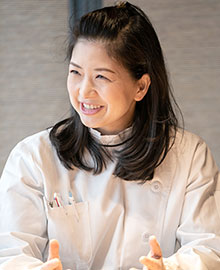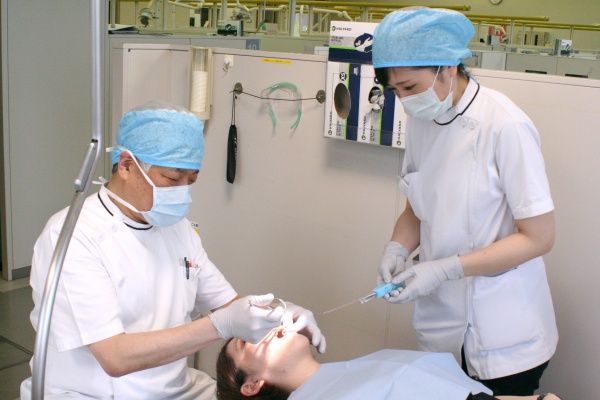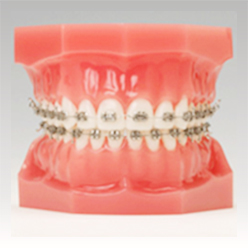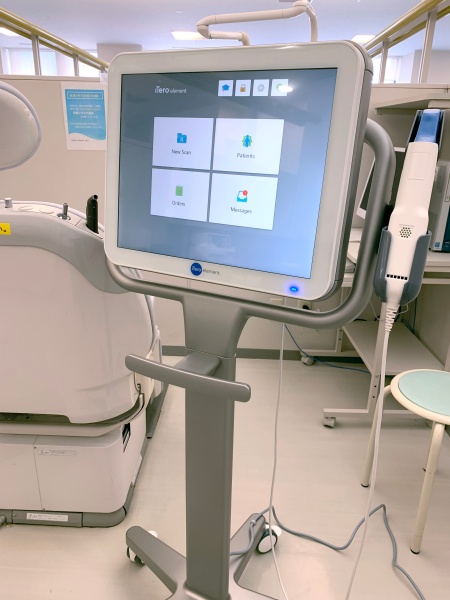Aki Nishiura
About the department
In Orthodontics, we provide patients in a wide range of age groups from children to adults with general orthodontic treatment, surgical orthodontic treatment for jaw deformity, and orthodontic treatment for patients with congenital diseases. Periodontal management and cleaning are conducted by specialists in parallel with orthodontic treatment.
- Facility certified by academic societies
- Certified basic and clinical training facility of the Japanese Orthodontic Society
- Certified training facility for specialists of the Japanese Society for Temporomandibular Joint
Common oral diseases treated
- 1) General orthodontic treatment (not covered by the health insurance)
Crowding (bad teeth alignment)
Spaced teeth (teeth with gaps)
Maxillary protrusion (projecting teeth)
Mandibular protrusion (underbite)
Bimaxillary protrusion (projecting front upper and lower teeth)
Open bite (untouched occlusion of upper and lower teeth)
Overbite (deep occlusion of upper and lower teeth)
Crossbite (lateral occlusion) - 2) Jaw deformity (covered by the insurance)
Marked mandibular protrusion, maxillary protrusion, open bite, crossbite, facial asymmetry, etc., that are diagnosed incurable with tooth movement alone and require jaw surgery - 3) 53 national designated congenital diseases (covered by the insurance)
(1) Cleft lip and palate (2) Goldenhar syndrome (including branchial arch anomalies) (3) Cleidocranial dysplasia (4) Treacher-Collins syndrome (5) Pierre Robin syndrome, etc. - 4) Three or more bony impacted permanent teeth of the maxillary and mandibular anterior teeth that require fenestration for impacted teeth (covered by the insurance)
*In our hospital, orthodontic treatment for the above 2), 3), and 4) will be covered by the health insurance.
Director of the department

Specialty/qualification
- Accredited orthodontic instructor and orthodontist of the Japanese Orthodontic Society
- Cleft lip and palate certified instructor of the Japanese Cleft Palate Association (Orthodontic field)
Chief Dental Clinician
Kenichiro Yasui
Characteristics of dental care
1) In our department, treatment is conducted by a pair of a trainer orthodontist and an attending orthodontist. Emergency trouble (breakage of the device, etc.) that could happen during treatment can be promptly responded by more than one orthodontist through the cooperation of a trainer orthodontist and an attending orthodontist.

2) We will select an orthodontic treatment appropriate for age and symptoms. We will provide treatment for growth control of the jaw and smooth replacement of primary teeth with permanent teeth in children. For the permanent dentition, we aim to create a well-balanced mouth with good occlusion by 'tooth movement' or 'tooth movement + jaw movement by surgery.'
3) In patients requiring resection of the jaw, we will treat them in cooperation with Oral and Maxillofacial Surgery of our hospital.
4) We perform partial orthodontic treatment before prosthetic treatment in cooperation with other departments such as Prosthodontics and Oral Implantology.
5) We will select the orthodontic device appropriate for each patient. We have aesthetic orthodontic devices that are less visible according to the wish of patients. (Metal brackets, ceramic brackets, lingual braces, etc.)


Process of dental care
- First visit: We will explain the details of treatment, expenses, and system of our department within the scope that can be determined by the first visit.
- Tests: X-rays, teeth mold, photos, and other tests
- Explanation of diagnosis/treatment policy: Treatment policy will be decided by analyzing test results. After explaining the above, if the patient wants treatment, we will start treatment.
A) Pediatric orthodontics: Treatment for the mixed dentition period with primary teeth. We provide treatment mainly for growth control of the jaw and dentition and smooth replacement with permanent teeth.
B) Full-scale orthodontics: Treatment for the permanent dentition. We mainly use a multi-bracket instrument (a type of instrument that moves teeth with wires) to create correct occlusion for each patient. In the case of moving from pediatric orthodontics to full-scale orthodontics, we will explain the testing, diagnosis, and treatment policy before full-scale orthodontic treatment. - Retention: In order to prevent the return, we ask the patients to use a retainer after the completion of pediatric orthodontic treatment and full-scale orthodontic treatment and periodically check occlusion and retainer.
Efforts for state-of-the-art dental care
1. Use of orthodontic anchor screws
The item used to minimize the number of devices to be removed by the patients and to ensure teeth movement
2. Checking of teeth mold by optical scanning
With this method, we scan oral cavity to obtain its model data.

3. Examination by dental CT
For cases in which conventional two-dimensional X-ray imaging cannot be used (e.g. teeth buried in the bone), three-dimensional imaging data will be created using dental CT for detailed examination.